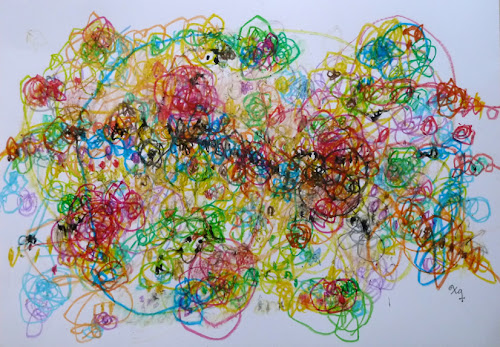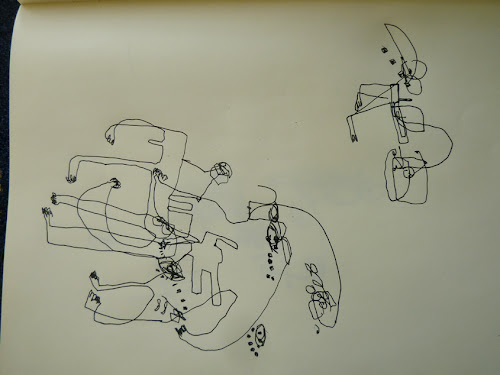This work is part of my series "Morphomata", a collection that explores the morphing and juxtaposition of diverse ideas and styles into intricate and meditative thought-forms. Each composition blends hand-drawn sketches, asemic writing, and AI-generated shapes, reflecting my fascination with the interplay between human intuition and machine creativity. Every element, whether meticulously crafted or algorithmically conceived, contributes to a tapestry of interconnected concepts and meanings.
The "Morphomata" series blurs the boundaries between the abstract and the figurative, offering meditative imagery that invites viewers to explore multiple interpretations. The interconnected elements encourage a non-linear engagement with the work, allowing each viewer to uncover unique pathways and narratives within the piece.
Through this fusion of techniques, I aim to examine the tension between structure and unpredictability, control and spontaneity, ancient ideas and modern expressions. The interplay between systems thinking, design, and magic aligns with ancient and modern contemplations of order versus chaos and the interconnectedness of all things.
The resulting pieces are greater than the sum of their parts—reflections of interconnected systems and the fluidity of perception. They are both visual inquiries and contemplative spaces, encouraging a dialogue between the viewer and the work, where meaning evolves with every glance.
The uploaded image is a highly symbolic and abstract collage filled with overlapping themes, blending elements of ancient mysticism, philosophy, visual storytelling, and conceptual systems thinking. Below is an analysis of the visual and thematic aspects of the image:
1. Themes and Concepts:
- Charisma and Spirituality: The word "CHARISMA" at the center, along with references to "The Eye of Ra" and the spiritual and physical planes, evokes ancient mystical and esoteric concepts, suggesting an exploration of influence, presence, and metaphysics.
- Fragile, Robust, Anti-Fragile Systems: This tripartite model visually explains how systems evolve, contrasting fragility (Damocles), robustness (stability), and anti-fragility (adaptation and growth through stress, represented by the Hydra).
- Intersection of Advertising and Magic: The Venn diagram linking advertising with magic may hint at the role of manipulation and enchantment in influencing perception and behavior.
- Art and Design Origins: The graph connecting "Where Art comes from" and "Where Design comes from" suggests a cyclical process of inspiration and intentional creation, emphasizing transformative moments ("BOOM").
2. Symbolism:
- Unicorn and Wheel: The unicorn atop a wheel signifies purity and imagination juxtaposed with cyclical movement and time.
- Eye of Ra and Human Observation: References to the spiritual and physical planes imply the duality of perception—one mystical and the other empirical.
- Animals (Rhino, Bee, Hydra): The hybrid rhino-fly and detailed bee connect nature's elegance with scientific curiosity. The Hydra represents resilience and adaptability, as mythological creatures often symbolize qualities transcending human limitations.
- Past, Present, Future Dynamics: The looping figure-eight diagrams evoke the concept of eternal return or the cyclical nature of time and memory.
- Text and Geometry: Mathematical notations, intersecting lines, and shapes serve as a visual language for abstract principles, blending scientific reasoning with artistic intuition.
3. Visual Style:
- Doodle-Like Drawings: The hand-drawn, seemingly improvisational style creates a sense of playfulness, making complex ideas approachable while evoking the feeling of brainstorming or note-taking in real time.
- Balance of Complexity and Minimalism: Despite its dense symbology, the use of monochrome ink ensures visual cohesion, and the varying levels of detail (e.g., the intricate bee versus abstract human forms) guide the viewer's attention.
- Layered Narrative: The interconnected elements encourage exploration of the image in a non-linear fashion, inviting viewers to form their own interpretations.
4. Ancient Mysteries Connection:
- Esoteric References: The Eye of Ra and references to observation on spiritual and physical planes connect to Egyptian mythology and metaphysical traditions that view sight as a source of creation and transformation.
- Philosophical Undertones: The interplay between systems thinking, design, and magic aligns with ancient and modern contemplations of order versus chaos and the interconnectedness of all things.






























